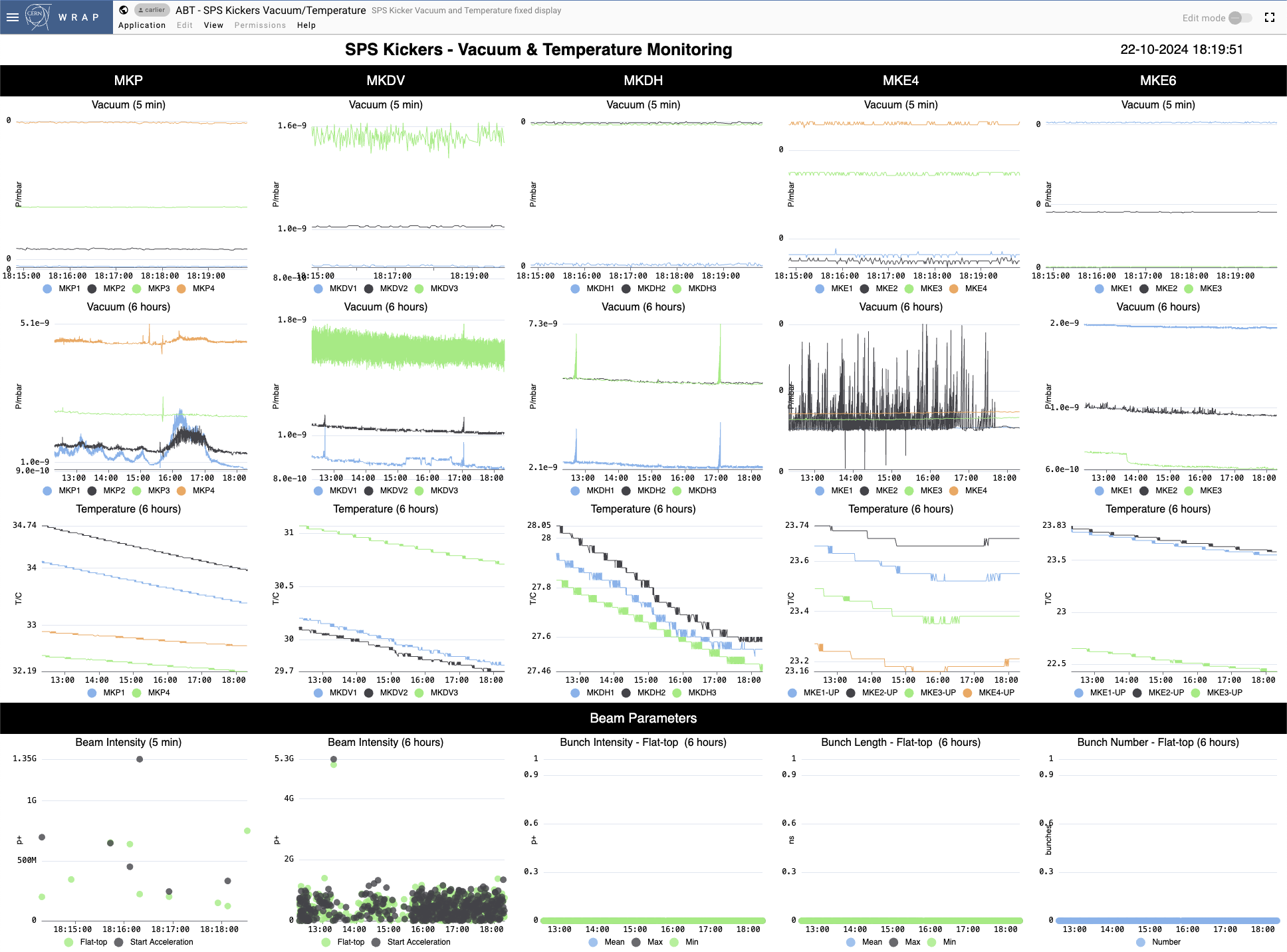Projects and Services
The Timing system ensures that CERN’s accelerator complex behaves as expected as a function of time. It calculates and broadcasts events based on GPS clocks, Operator input, database configurations and accelerator interlocks.
The AscBeans are a set of GUI components. They simplify the development of Java applications that need to display and edit controls devices' parameters.
A standard approach to Web development for Controls, upon which custom web applications can be based.
The logging service persists data of more than 2 million pre-defined signals coming from heterogeneous sources. These signals range from data related to core infrastructure such as electricity, to industrial data such as cryogenics and vacuum, to beam related data such as beam positions, currents, losses, etc. In addition to persistence, the logging service provides the APIs and user interfaces to visualize, analyse and extract the aforementioned data.
The Layout Service provides centralised management of integrated, controlled "Functional Position" data across CERN. Accelerator infrastructures are documented by modelling their architectures as topologies of Functional Positions which specify the size, position and rotation of the space that any component occupies as well as the relations between components.
The Controls Configuration Service is a key component in CERN’s data driven accelerator Control System. Based around a central database, the service provides a range of user interfaces and APIs enabling a large and diverse user community to configure all of the different aspects of controls for CERN’s entire accelerator complex.
The Controls Console Manager (CCM) is an application launcher in the shape of a menu tree allowing the launch and control of accelerator controls applications in CERN's operational environment.
CESAR is a client-server control system for the beamlines of the SPS experimental areas, used by an overall community of over 1000 experimental physicists. Apart from controlling 30 different types of hardware, CESAR is capable of reliably managing beamline settings.
The CMW (Controls Middleware) framework provides communication infrastructure for all CERN accelerators, enabling client applications to connect, control and acquire data from all types of equipment.
The CERN accelerator controls infrastructure spans several thousands of computers and services used for Accelerators control and data acquisition. COSMOS is an open-source based solution developed at CERN (2018) to monitor and diagnose the complete controls infrastructure.
FESA is a comprehensive environment for equipment specialists to design, develop, test and deploy real-time control software written in C++ for front-end computers (in the context of CERN’s control system, Front-End refers to computers which control particle accelerator’s equipment, and has nothing to do with Web development).
The purpose of OASIS is to acquire analogue signals from devices in the particle accelerators in CERN and display them in a convenient, graphical way. It is used by equipment specialists, engineers and operators in order to watch the behavior of a wide variety of systems in real-time.
The “Accelerating Python” (Acc-Py) initiative was launched to unlock the potential of Python in the Accelerator sector, including in an operational control-room setting. With operational stability in mind, we wish to provide a full-powered, first-class, Python service which fits the needs of our diverse community from R&D through to production.
The purpose of SILECS is to mitigate the communication issues by providing communication interfaces in a hardware-independent manner. In addition, it automatically generates all the resources needed on client (FEC) and controller side to implement a common and generic Ethernet communication.
Web Rapid Application Platform (WRAP) is a new application builder aiming to provide a zero code, drag-n-drop means of configuring accelerator control applications.

WRAP provides to non-software developers a user-friendly tool to develop interactive applications fully integrated in the Accelerator Control system. In addition, with this approach, the user investment is better protected against underlying technology evolutions and modifications in the low-level control system.
WRAP is based on a classic web stack with the backend in Java with Spring Boot and the frontend in TypeScript with
